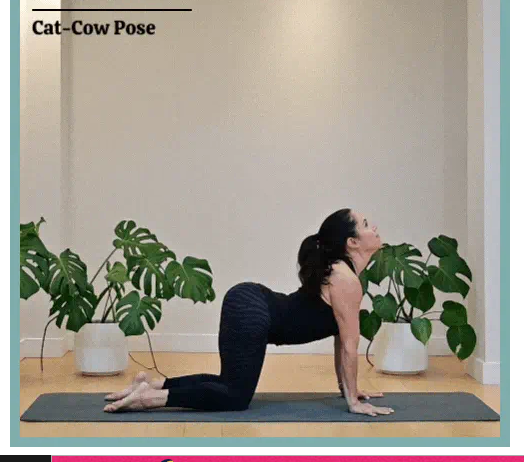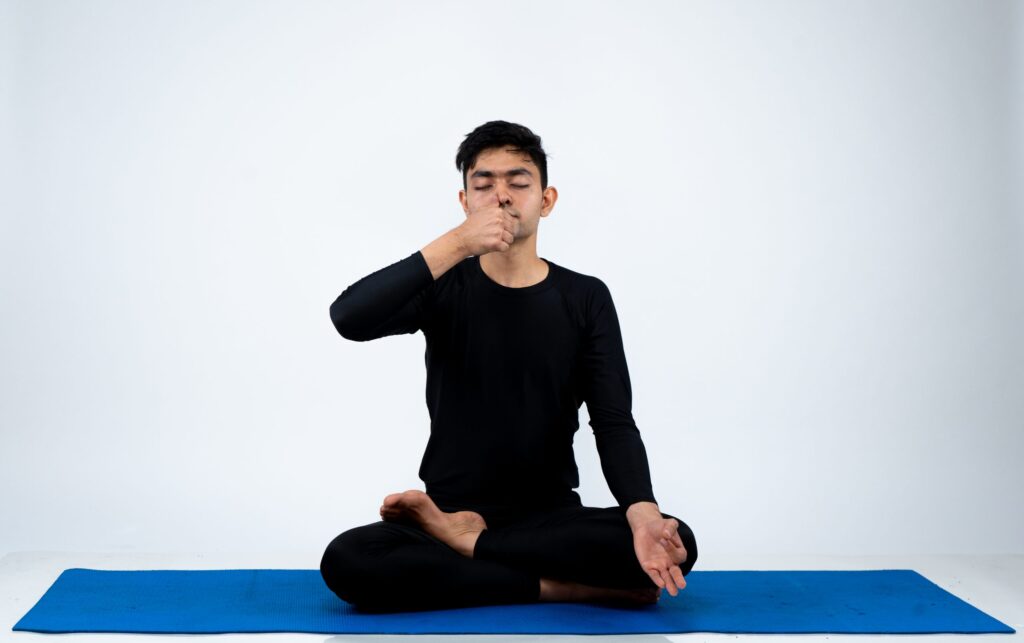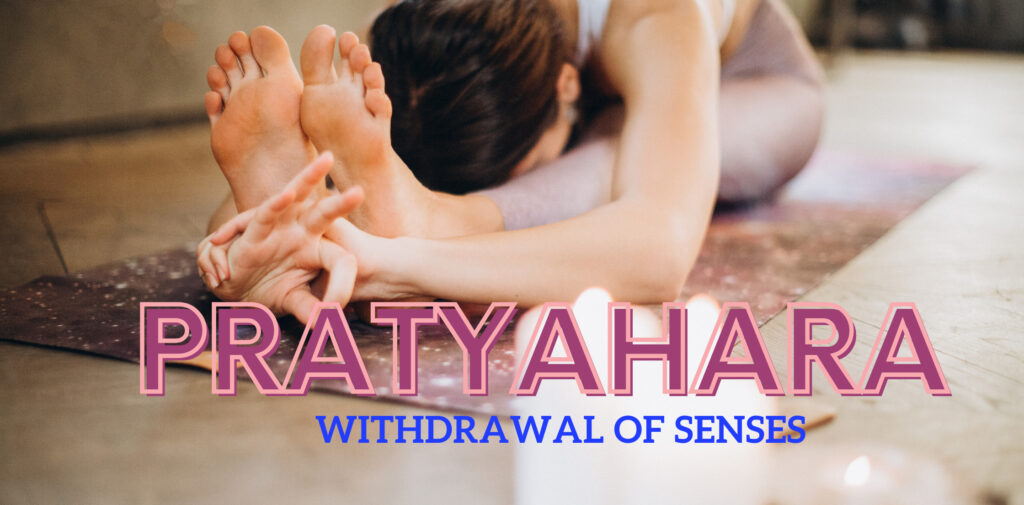After learning about the first two limbs(Yamas and Niyamas), we come to the 3rd, 4th & 5th limbs of Ashtang Yoga. These are :
Pranayam, and
Pratyahara
3rd, 4th & 5th limbs of Ashtang Yog
According to the Yogsutras, a yogi or sadhaka should first follow the 5 abstinences of the Yamas – Ahimsa, Asteya, Satya, Brahmacharya and Aparigraha. After this come the do’s(Niyamas), namely Saucha, Santosha, Tapas, Svadhyaya and Ishwar Pranidhan. Once a sadhaka has started practising the above, he should proceed towards Asana, Pranayam and Pratayaha.
Asana – 3rd limb of Ashtang Yoga
Asana is the practice of physical postures, commonly called Hath Yoga. Postures or asana is the most commonly known aspect of yoga for those who are unfamiliar with the other seven limbs of Patanjali’s Yoga Sutra. The convention of driving the body into postures has across-the-board benefits; of these, the most fundamental ones are improved health, strength, balance & flexibility. On a more profound level, the practice of asana is used as a tool to calm the mind and move into an internal essence of being.
Thus, the practice of asana becomes a preparation for meditation for us because it promotes the quieting of the mind. The physicality of the postures becomes a means to expand the consciousness that pervades every aspect of the physical body.

As a beginner, one should learn Yogasanas with a certified yoga trainer. Later on, one can also practice the known routines on your own.
Various examples of asanas are Trikonasana, Bhujangasana, Virabhadrasana, Tadasana, Padahastanasana and Mandukasana.
Pranayama – 4th limbs of Ashtang Yoga
Prana means life force, and yama means control or regulation. The Pranayama practice: breathing exercises and control of prana, one of the eight limbs or steps of Patanjali’s eight-
limbed path of yoga or union; the way to ever-lasting peace. Pranayama are breathing techniques that promote the flow of the life force(prana) in the Nadis.

This art of right living or Yogic living was perfected and practised in India thousands of years ago and was scripted in the Yoga Sutras in approximately 200 AD by Patanjali. This sacred text illustrates the nuances of the mind, body and spirit and provides a step-by-step blueprint for everlasting peace.
There are various kinds of pranayama or breathing exercises such as Bhastrika, Kapalbhati, Anulom Viloma, Ujjai, Bahiya, Bhramari, Nadi Shodhan and Kumbhak etc.
Fifth Stage – Pratyahara

Pratyahara refers to the withdrawal of senses- just like a tortoise withdraws its limbs inside. It helps one become centred and stable. Pratyahara involves not getting blown away by external stimuli of joy, grief, food or other pleasure and pains.
The practice of Pratyahara cultivates
1) Non-judgement
When the senses function in complete harmony with inner wisdom, one does not waste one’s energy in dividing experiences into good, bad, pleasant, unpleasant etc.
) Detachment from old patterns
Our mind is constantly reaching out through the senses, seeking attachment to past impressions, which result in clinging on to repetitive patterns/ situations in life. Pratyahara helps in breaking those patterns.
3) Choosing responses
Remaining in the middle of a stimulating environment and consciously not reacting, but responding helps to withdraw the senses inwards.
All these 3 ways help one to experience psychological freedom and an abundance of energy.
So we see that Pratyahara leads to deeper purification and stillness of the mind. It is the perfect prelude to the next limbs of dharana, dhyana and samadhi..
Final note
Uniting the body with the mind is initiated with Asanas. After that, fostering the expansion of consciousness begins with the control of breath or Pranayama. Pratyahara with its control over the senses, expands the consciousness. The sacred text of the Yogasutras recommends this amalgamation to create a fertile field for the evolution of the spirit. The life force that is cultivated at this stage is channelised in the next stages of Dharana, Dhyana and Samadhi.
